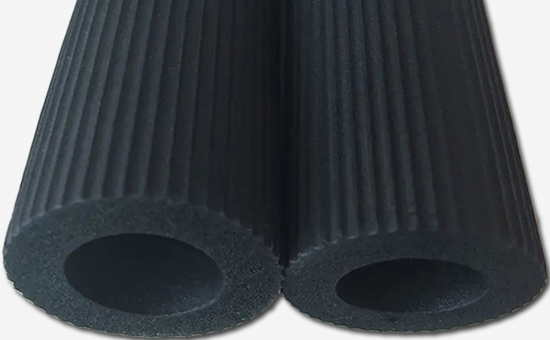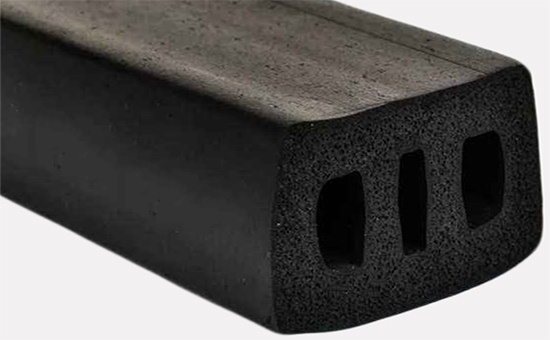Recycled rubber is widely used in the production of rubber products, which can effectively reduce raw material costs, including various sponge rubber products such as sponge rubber soles, sponge rubber plates, foam sealing strips, etc. When using recycled rubber to produce sponge foam rubber products, the combination of various additives in the filler system directly affects the processing performance of the foam rubber, as well as the strength, durability, and manufacturing cost of the finished product.
When using recycled rubber to produce,sponge rubber products, it is necessary to fully consider the dispersibility of the filler. The uniform dispersion of filler particles in the rubber material can promote the formation of pore blanks, which is directly related to the uniformity of foaming and the surface appearance of recycled rubber sponge foam rubber products. Increasing the amount of filler can make the surface of recycled rubber sponge products smooth and reduce shrinkage during subsequent heating, but at the same time, it can also cause thickening of the pores, so it is important to pay attention to the amount of filler used.

Sponge foam rubber products use recycled rubber to reduce costs, and the filling system can choose to use several additives in combination. The amount should not be too large to avoid an increase in the density of sponge rubber.
Half reinforced carbon black, easy to mix groove black, and lightweight calcium carbonate are fillers with good dispersibility, commonly used in the filler system of recycled rubber sponge rubber products. When using reinforcing fillers such as white carbon black, clay, and magnesium carbonate, attention should be paid to their dispersibility; High density fillers such as white carbon black and clay are not suitable for the production of low-density recycled rubber sponge rubber. When producing sponge foam rubber products from recycled rubber, oil paste can also be used as a compatibilizer, which has the function of softening and plasticizing, and the dosage needs to be reasonably controlled.

When producing extruded sponge rubber from recycled rubber, it is recommended to choose fast extruded carbon black or semi reinforced carbon black, which will not increase the viscosity of the mixed rubber; It is advisable to use lightweight calcium carbonate, clay, etc. as filling materials.
When using different varieties of recycled rubber to produce sponge foam rubber products, the blending agents in the filler system are different.For example, when using recycled rubber and chloroprene rubber to produce foamed rubber, semi reinforced carbon black and high abrasion resistant carbon black have better foaming ratio, surface condition, pore size, and uniformity than calcium carbonate on chloroprene rubber. When producing light colored or brightly colored sponge rubber from latex reclaimed rubber, it is recommended to use magnesium sulfate, white carbon black, clay, calcium carbonate, etc. The molecular structure of magnesium sulfate is diamond shaped, which can reduce the shrinkage of sponge products; Light calcium is used as a filler; White carbon black has good reinforcement properties, but its disadvantage is its high price.

When using recycled rubber to produce sponge foam rubber products, rubber product manufacturers also need to design reasonable vulcanization system, foaming system, softening system, anti-aging system, etc., especially paying attention to the coordination and vulcanization system and foaming system. The editor will continue to discuss relevant issues with you in the future.
Exclusive original article [commercial authorization] reprint, excerpt and excerpt in any form are prohibited without written authorization. Focus on Hongyun rubber: learn the process formula and raw material technology of producing rubber products from recycled rubber to help you reduce costs and increase profits